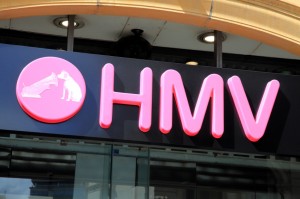Time to Face the Music - Change Marketing?
 It’s been a sad week for the pre-download generation. For all those who can remember queuing outside HMV to buy the first copy of a new release, or sharing headphones with a friend to listen to the latest tunes on a Saturday afternoon, the record store has been washed away in a flood of nostalgia.
And it’s not the only one; Jessops and Blockbusters have also been high street casualties over the past few days, resulting in more pundits’ laments about recession, consumer spending and the end of an era.
It’s been a sad week for the pre-download generation. For all those who can remember queuing outside HMV to buy the first copy of a new release, or sharing headphones with a friend to listen to the latest tunes on a Saturday afternoon, the record store has been washed away in a flood of nostalgia.
And it’s not the only one; Jessops and Blockbusters have also been high street casualties over the past few days, resulting in more pundits’ laments about recession, consumer spending and the end of an era.
Much as the economic climate has had a role to play in the demise of these high street stalwarts, there is another major factor at play here: times have changed and the retailers bowing out of our high street have failed to keep pace with that change.
In a world where most people buy music, stream video and edit their photographs using a computer or other electronic device, the fact that we have lost a music shop, a video shop and a photography shop should come as little surprise. The online retail space continues to grow as the high street contracts and the toes that these three businesses have dipped in the water of online trading and diversification may have shown a willingness to evolve, but unfortunately it was all too little too late.
It’s a stark warning to any business about the need to adapt to a changing commercial world where technology not only affects what we do, but also affects how we trade, how we communicate and what our customers expect from us. It is not enough simply to react to change or to match your competitors’ activities: a successful business needs to be able to anticipate change, plan change into their business model and implement change seamlessly in line with their core strengths.
Marketing is one of the business functions that have required significant change over the past few years as more and more stakeholders communicate electronically, are influenced by online channels and user-generated content and expect a high degree of functionality from online channels. The fact remains, however, that, amongst the early adopters who have embraced the paperless office and the Skype call in preference to a two-hour drive to meet face to face, there are still those who like to read a brochure and who will delete an email newsletter but read through hard copy direct mail that arrives in their in tray. The key is understanding your audiences and targeting them effectively.
This is all very much a moveable feast: who knows where technology will take us next. It’s clear, however, that the pace of change is escalating and that fact needs to be built into the architecture of your business processes if you are to be robust enough to survive the journey. Whether you see change as a good thing or a nuisance, it is utterly inexorable and nostalgia for the good old days and a Luddite approach to doing things ‘the good old fashioned way’ is simply not viable. So if you look upon pop ups, cookies, SEO and social media with fear and loathing, perhaps it’s time to face up to the future.
